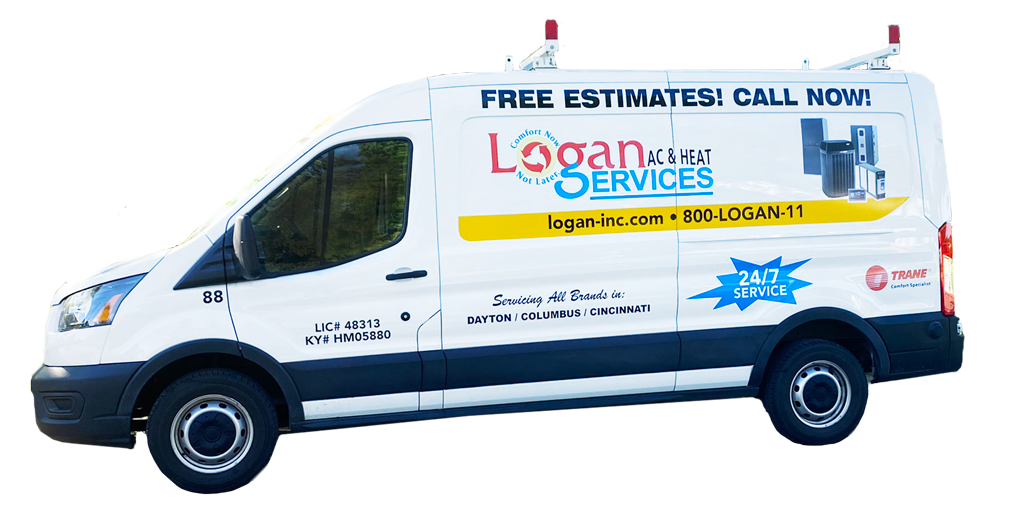Installing a residential air conditioning system may seem intimidating, but armed with the right information and preparation, determined DIYers can safely and successfully install their own air conditioners. We encourage using a professional installer for optimal safety and performance. Whether you want to put in a basic window AC unit or a whole-home central air system, this step-by-step guide on how to install air conditioning will walk you through the entire installation process.
Choosing the Right AC Unit Type
Choosing the correct type and size of air conditioning unit for your home is one of the most important decisions in the installation process. An improperly sized or designed AC will not only provide inadequate temperature control but also waste significant energy over time. A variety of factors influence the ideal air conditioner selection for your space.
First and foremost, consider your home’s size and unique layout. The required cooling capacity varies substantially between a small apartment and a sprawling two-story house.
Expert HVAC technicians perform detailed calculations known as “Manual J load calculations” to determine the optimal equipment capacity tailored to a home’s thermal efficiency. Insulation levels, window area, ceiling heights, and other elements are assessed to calculate peak heat gain and losses for the floorplan so equipment can offset maximum loads during hot weather.
In addition to home size, it’s also critical to determine the number of zones you want conditioned by the air conditioner. For supplemental spot cooling, a basic window unit or wall-mounted mini split placed in a frequently occupied room may suffice. To separately control temperatures in multiple rooms, a multi-zone mini split system with variable refrigerant flow allows customizing comfort per area. Alternatively, extending ductwork from a centrally located air handler enables adjusting different parts of the home through register vents and dampers, even if cooled by the same central AC machinery.
Carefully weighing present and future needs for whole-home versus partial cooling helps narrow down equipment types and sizing. Getting professional consultations as part of the HVAC system design process is invaluable for average homeowners unfamiliar with the nuanced calculations. Investing the effort into appropriate air conditioner selection maximizes the enjoyment of the cooling benefits for years to come.
Air Conditioning Unit Types
The main options include:
Window Air Conditioning Units
Window air conditioning units are lightweight and easy to install for cooling a single room. All components fit into a chassis that slides into a window frame opening. These are best for supplemental spot cooling. Some models have accordion panel sides to allow the unit in various window sizes.
Wall AC Units
Wall air conditioning units work like window air conditioners, except they are mounted onto a home’s wall or a building’s roof or facade. No window space is needed. They offer targeted room or zone cooling.
Ductless Mini Split Systems
Mini split air conditioners have an outdoor compressor that links to one or multiple wall-mounted indoor blower units for cooling multiple rooms without ductwork. Split system mini splits provide quiet, efficient whole-home or multi-zone cooling.
Central AC Systems
Central air conditioning systems have an outdoor condenser and evaporator coils that connect to an indoor furnace or air handler. Ductwork distributes cooled air throughout the home for whole-home cooling. These integrated central air conditioner systems offer the most powerful AC performance.
Air Conditioner Sizing and BTU Calculations
Properly sizing your air conditioning unit is vital for sufficient cooling. Unit capacity is measured in BTUs (British Thermal Units). Higher BTU ratings indicate more powerful cooling abilities.
As a rule of thumb:
- Window/Wall AC Units: Multiply room square footage by 15 to calculate needed BTUs. A 150 sq ft bedroom needs a 5,000 BTU AC (150 x 15 = 2,250).
- Central AC Systems: Total the square footage of all rooms being cooled and multiply by 25. A 2,000 sq ft home needs 50,000 BTU AC (2,000 x 25= 50,000).
Use an online BTU calculator for more precise sizing. Oversizing units waste energy, while undersizing won’t properly cool.
Air Conditioning Installation Step-by-Step
Once you choose the right type and size AC unit, though we strongly recommend hiring a licensed professional for installation, if you decide to take on the project yourself, then be sure to very carefully follow these key steps to safely and effectively install it:
Step 1: Select an Appropriate Location
- Window AC units need a window with the proper measurements and an electrical outlet nearby. Secure tightly into window openings using provided side accordion panels.
- Wall units require vertical exterior walls that are able to support their weight structurally.
- Central AC systems place evaporator coils/furnaces in centrally located spaces like the basement or closet. Furnaces need combustion air and condensate drainage.
- Compressor condensers work best in open outdoor locations with good airflow.
Step 2: Prepare and Cut Openings
Depending on the AC unit type, this may involve:
- Cutting wall openings to exact product measurements for chassis mounts, vents, refrigerant, and condensate lines.
- Constructing framed platforms or clearances for furnace or evaporator coil placement.
- Cutting duct liner panels for registers.
Use stud finders to avoid hidden framing. Check for electrical wires or pipes before cutting. Refer to installation manuals for all required opening sizes.
Step 3: Securely Mount the AC Unit
Once openings are prepared:
- Set window AC units into openings and secure side panels tightly.
- Attach wall unit mounting brackets securely to wall studs.
- Bolt down furnaces/evaporator coils on provided equipment stands or suspended platforms. Ensure they are level.
- Set the compressor condenser on a stable, flat outdoor surface with several inches of clearance.
Step 4: Install and Connect Ductwork
For central air conditioning systems, attach all duct runs leading to and from the furnace or coil unit using sheet metal screws. Seal joints thoroughly with duct mastic. Insulate all duct runs in unconditioned spaces to prevent condensation and energy losses.
Step 5: Connect Refrigerant and Condensate Lines
Connect the copper refrigerant lines between the evaporator coil and the outdoor AC condenser using flared fittings. Cap ends until ready for refrigerant charging.
Condensate drain lines should slope downward from the evaporator drain pan and drain outside. Poor drainage impairs air conditioning and risks water damage.
Step 6: Wire Electrical Connections
Run dedicated power supply wires to the AC components. Follow code requirements and connect black (hot), white (neutral), and green/bare (ground) wires correctly. Some areas also require conduit enclosure.
Step 7: Insulate the Refrigerant Piping
Once connected, wrap both refrigerant lines with rubber foam pipe insulation. This insulates the cold gas line to prevent unwanted heat transfer or moisture condensation that can block airflow.
Step 8: Pressure Test and Charge Refrigerant
AC technicians should perform refrigerant pressure tests and evacuate air before charging systems with the precise refrigerant type and amount needed for optimal performance and energy efficiency. DIYers without certification cannot directly handle refrigerants.
Step 9: Install and Connect Smart Thermostat
Today’s WiFi-enabled smart thermostats give users ultimate temperature control and energy efficiency. Connect the thermostat cable at the furnace/air handler and configure device settings.
Step 10: Test and Commission AC System
Professional HVAC commissioning ensures optimal operation. Technicians verify electrical safety, airflow, system capacitance, etc. DIYers should run new AC systems to check for any issues, from unbalanced air temperatures to abnormal noise, before everyday use.
The complexity of an AC installation makes it highly advisable to hire a professional AC installation technician. Attempting a DIY installation as an amateur can be dangerous and is likely to result in substandard performance or malfunctions if not done properly. Only trained HVAC technicians have the skills, tools, and experience to handle the electrical, mechanical, and refrigerant aspects of the job safely and correctly. Leave it to the professionals and hire a reliable, licensed contractor for your air conditioning installation.
Safety Precautions for Air Conditioning Projects
AC installations involve risks like working at heights, handling electrical components, and using power equipment. Take these essential safety measures:
- Turn off circuit breakers to AC equipment before wiring connections.
- Use non-conductive, OSHA-rated ladders when mounting overhead units.
- Wear eye protection and gloves when cutting ducts or wall openings.
- Avoid direct skin contact with refrigerant gases, which can cause frostbite.
- Have multiple helpers lift and position heavy furnaces/condensers over 75 lbs.
Be sure to hire reputable HVAC contractors for complicated, dangerous installation steps beyond your DIY expertise, like refrigerant charging.
Tools and Materials Checklist
Ensure you have these essential items before starting any AC installation:
- Safety gear: glasses, gloves, sturdy shoes
- Common hand tools: tape measure, stud finder, level, wrenches, etc.
- Power tools: circular saw, reciprocating saw, drill, etc.
- Ductwork materials: metal sheets, duct liner, tape, insulation, etc.
- Condensate line components: PVC pipe/fittings, pipe insulation wrap
- Electrical: thermostat cable, wire, conduit, etc. per codes
- Hardware: screws/bolts, clamps, brackets suited for wall/unit weights
Importance of Proper Ductwork
For central air conditioning systems, the ductwork that distributes conditioned air is equally as important as the machinery itself. Improperly installed or inefficient ducts lead to uneven room temperatures, higher energy bills, and reduced system performance.
Signs of poor ductwork:
- Noticeable temperature differences between rooms
- High humidity levels in certain areas
- Excess dust and debris around vents
- Higher than-expected cooling costs
Upgrading ductwork involves:
- Inspecting current runs and ventilation for issues
- Sealing loose connections and joints with mastic
- Replacing damaged/subpar sections
- Improving insulation to prevent condensation
Extending ventilation to unused areas like attics can also optimize airflow. In some cases, installing entirely new ductwork is needed for ideal temperature control and energy efficiency.
While inspecting and amending ducts requires professional expertise, it saves money over time through enhanced AC system functionality. Properly installed ductwork distributes cool air evenly to all interior rooms. Consult HVAC specialists about duct improvements when installing new air conditioners.
Reduces Energy Bills and Increases Home Value
In addition to providing home cooling, installing a new, energy-efficient air conditioning system can also help reduce monthly energy costs and increase home equity value over time. By upgrading to a modern central AC unit and ductwork with higher SEER ratings, homeowners can cut electricity usage significantly compared to older models, saving hundreds of dollars annually—reduced utility bills free up money for other priorities. Central air conditioning also boosts resale value by being an expected system in most markets.
The upfront investment into a professionally installed central air conditioning system pays dividends through lower ownership costs and increased real estate value. Carefully weigh these long-term impacts against the initial purchase and installation prices when selecting new air conditioning equipment.
Hiring Professional HVAC Services
While DIY air conditioner installation is possible for those with electrical, carpentry, and construction skills, many homeowners delegate all or part of the complex process to heating/cooling contractors.
Check licenses, insurance status, and expertise with local code compliance when choosing an air conditioning specialist to handle dangerous work like:
- Managing refrigerant chemicals
- Placing units on dangerous heights/surfaces
- Completing full electrical load calculations
- Optimizing whole-home air balancing
Using qualified pros who offer testing, commissioning, and warranties gives peace of mind that your new cooling system operates safely and efficiently. There are many options available to finance a new air conditioner. Be sure to do extensive research when choosing the right option for your home.
The Logan Difference
Family-owned since 1969, Logan A/C & Heat sets itself apart by prioritizing customer care. Our experienced, thoroughly trained technicians ensure quality installations and service. We verify that we have all the needed parts before appointments to avoid frustration.
Clear communication is emphasized at all phases – from setting expectations to detailed post-install walkthroughs explaining equipment operation and maintenance. Logan handles all permitting and warranty paperwork for added convenience.
Community matters to us, too. Through volunteer work and sponsorships, we support local causes because we live here also. It’s the little things that customers appreciate. Our personal touch builds goodwill so you’ll become more than just another client. That’s the Logan difference!
Frequently Asked Questions (FAQs)
How long does air conditioner installation take?
The installation timeframe depends on the system type and scope: simple window units may take as little as 1-2 hours, while whole-home central air with ductwork can take 2-3 days.
What are the most difficult parts of installing air conditioning?
Cutting accurate openings, securely mounting heavy condenser units, sealing duct joints, and completing tricky refrigerant line connections present the steepest challenges. Mistakes can undermine performance and safety.
Will installing AC myself void the warranty?
It depends. Most AC component warranties allow DIY installation, while “improper installation” excludes warranty coverage. Hire certified pros at least for refrigerant charging, electrical hookups, etc., to enable warranties on those services.
Can I run the AC installation electrical from an existing circuit?
Maybe, but existing circuits must have adequate capacity. Dedicated lines just for the air conditioner ensure sufficient power, prevent tripping breakers, and meet codes. Consult an electrician about tapping into existing power sources safely.
What permits do I need to install AC?
Rules differ across regions, but AC installations often require building permits for cutting holes in structural walls, running new electric lines, or complicated ductwork. Many areas mandate licensed electricians and HVAC techs to handle complex parts of the job. Research your local permitting laws.

















